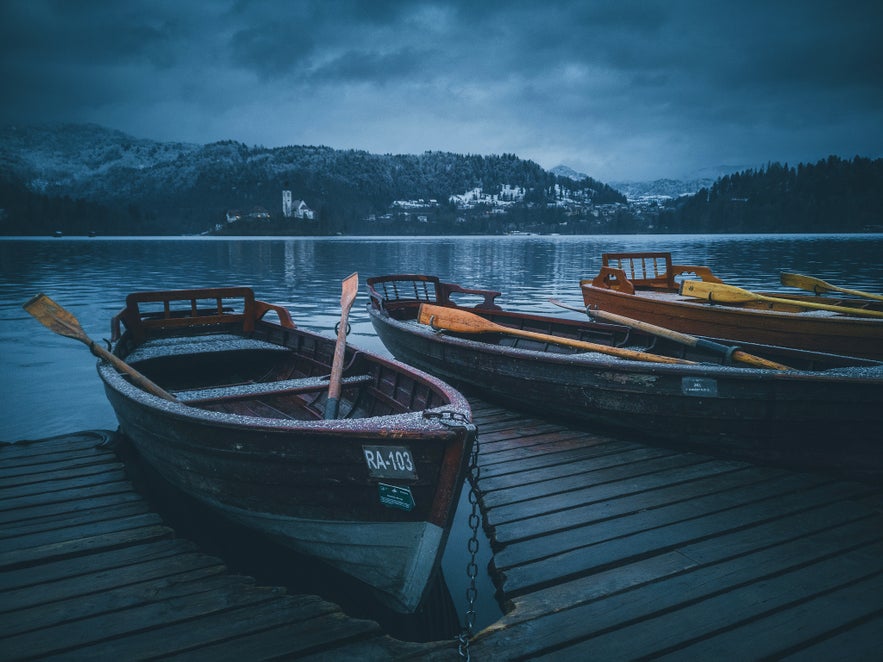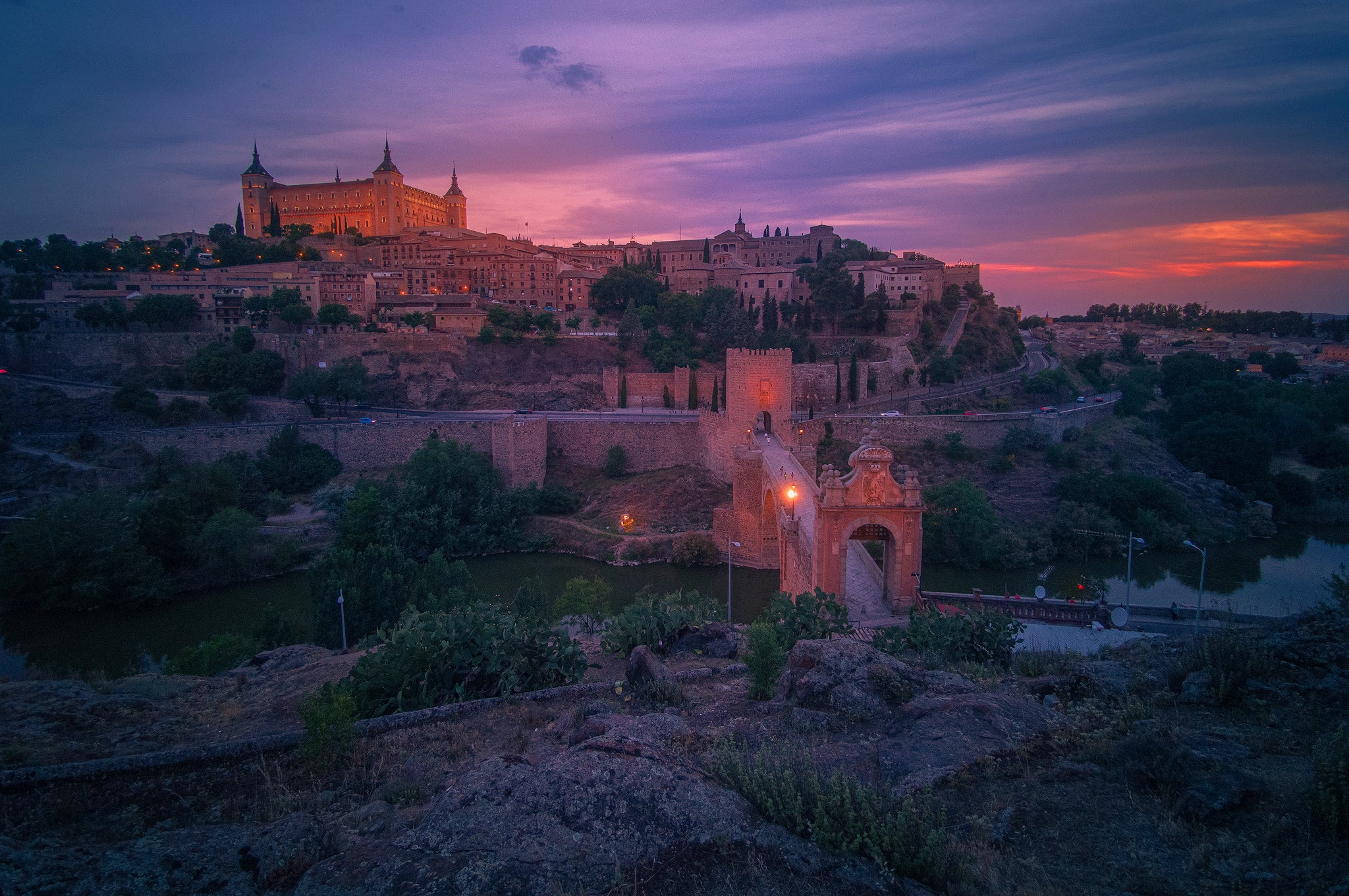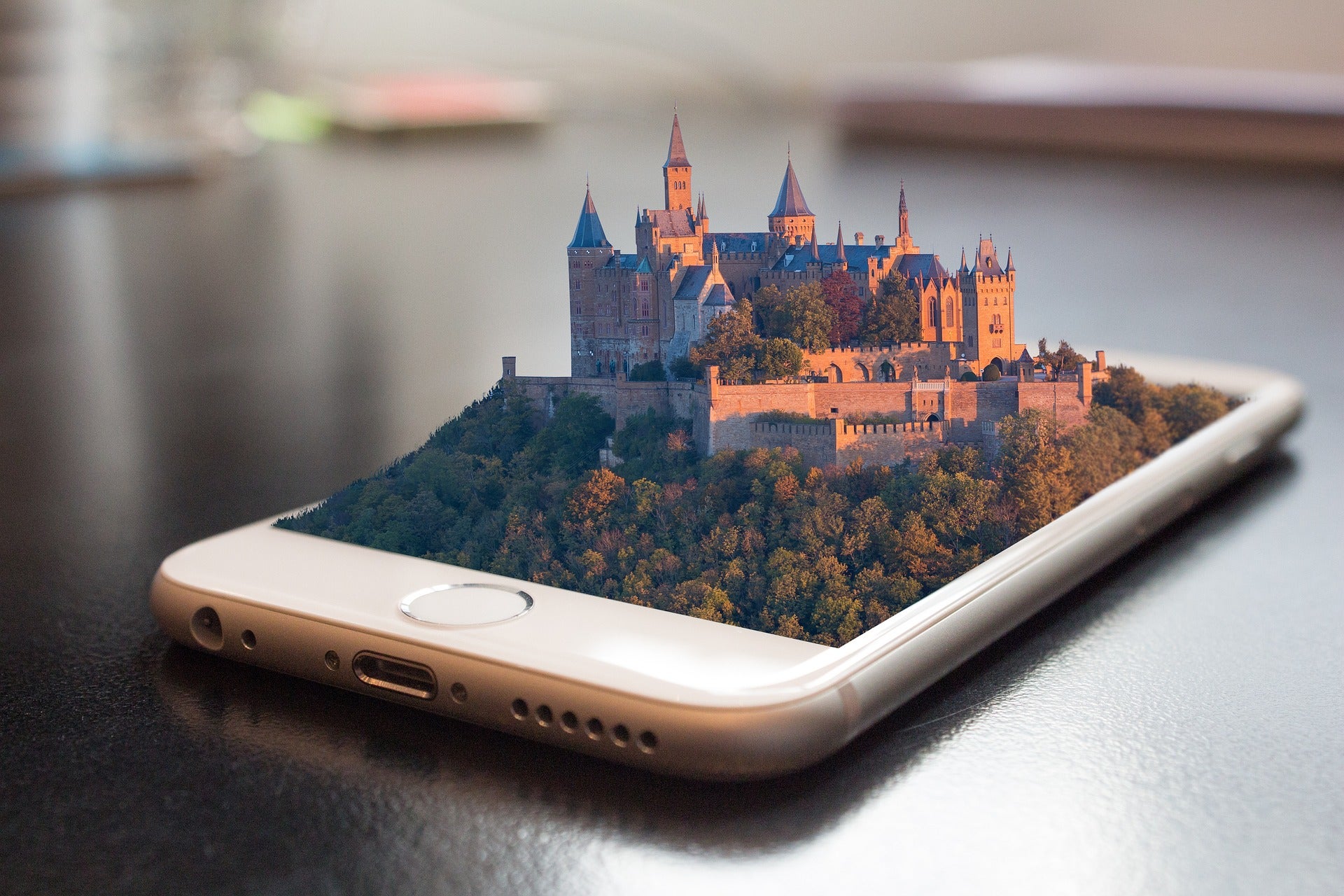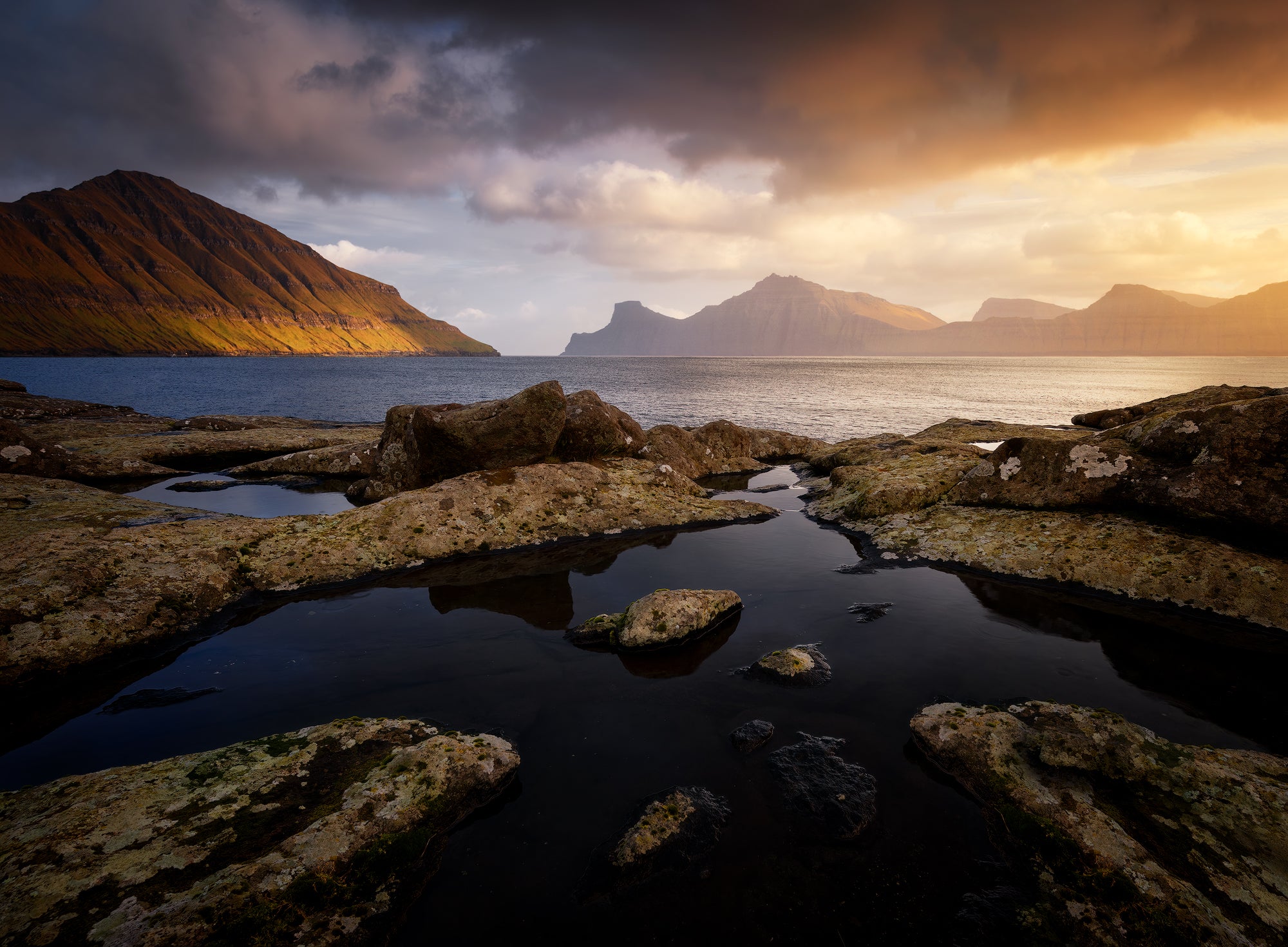
These days, nearly everybody has a smartphone that is equipped with an amazing camera. It’s easy for people to take photographs, whether they’re at home, at a restaurant or out and about in nature.
- Check out these 5 Advanced Landscape Photography Techniques to Try in Iceland
- Learn How to Use Balance for Better Compositions in Photography
In fact, smartphone cameras have made it so easy for us to document our travels that many of us end up taking zillions of photos, only to leave them sitting in the storage archives of our phones. But what if we could give those images a professional touch to make them look stunning enough to share with our friends and family?
With the advent of social media channels such as Instagram, more people are editing smartphone images with mobile apps designed to take otherwise mundane photos to another level. Similar to landscape photography with a DSLR, it is a rare thing to end up with an image straight out of the phone camera that doesn’t require any processing.
In this article, I’ll discuss some of the ways that you can edit your smartphone photos, which will not just improve your photography but will help you to develop your own style. I’ll also share some of my tips and tricks, beyond just boosting the saturation and increasing the contrast, which will put you on the path to taking incredible landscape images with your smartphone in no time.
Smartphone Shooting Formats Explained
While most smartphone cameras don’t come with interchangeable lenses, they do come equipped with several different shooting formats which are designed to give you the option of mimicking different focal lengths. These are great for landscape photography as they allow you to get a bit more creative by offering a different perspective.
Standard Format
The standard shooting format on your smartphone camera is similar to shooting with a standard lens within the 35mm range on a full-frame DSLR. This format requires you to use your feet if you want to move closer or further away from your subject without using the digital zoom.
 The standard format is similar to 35mm. Photo by: 'Roberto Pavic'.
The standard format is similar to 35mm. Photo by: 'Roberto Pavic'.
All smartphones come with a standard lens and the quality of these lenses continues to improve with technological updates.
Wide Angle Format
 Wide angle lenses have improved the smartphone photography experience. Photo by: 'Roberto Pavic'.
Wide angle lenses have improved the smartphone photography experience. Photo by: 'Roberto Pavic'.
A couple of years ago, wide angle clip-on lenses were introduced into the world of smartphone photography. They were expensive and difficult to use; the lenses were not made to fit all models of smartphones that were on the market at the time, so you had to hunt around to find one that would suit your particular phone.
In addition, most of the clip-on wide-angle lenses were made of plastic, resulting in images of poor quality. If you didn’t clip the lens onto your phone correctly, you would also risk catching part of the lens in the frame whenever you took a picture.
 Most smartphones enable you to shoot in wide angle these days. Photo by: 'Roberto Pavic'.
Most smartphones enable you to shoot in wide angle these days. Photo by: 'Roberto Pavic'.
These days, most smartphones either have a wide angle lens built in to the hardware, or will offer you the option of shooting in wide angle format. The benefit is that you can now fit everything that you see within the landscape into a single frame. You can even get more creative with your compositions, as you now have the ability to include more of the foreground and hence, to use the common photography technique of leading lines.
Some smartphones even have a 120-130 degree field of view, which can be very handy when you’re shooting the sprawling scenery of Iceland.
 Wide angle lenses allow you to be more creative in field. Photo by: 'Roberto Pavic'.
Wide angle lenses allow you to be more creative in field. Photo by: 'Roberto Pavic'.
Zoom Format
The zoom format is similar to using a telephoto lens. Whether or not your smartphone will offer this format depends largely upon the brand and model that you have.
 The zoom format enables you to photograph wildlife from afar. Photo by: 'Roberto Pavic'.
The zoom format enables you to photograph wildlife from afar. Photo by: 'Roberto Pavic'.
While some smartphones offer the snazzy new technology of optical zoom, others still only give you the option of using a digital zoom. If your camera relies on digital rather than optical zoom, then chances are that the final quality of your images will be diminished. This is because digital zoom is not really zooming in the way that you would with an actual lens. Rather, it is magnifying the image size, which also magnifies other artefacts and noise.
On the other hand, smartphone cameras with optical zoom will produce images of higher quality. This is great for landscape and nature photography, particularly if you plan on making prints. Currently, both Samsung and iPhone offer 2x optical zoom on their models of smartphones, while Huawei offers a massive 5x optical zoom. This is something that you’ll find very useful when shooting in-field!
Panorama Format
The panorama format on your phone is a great feature that will allow you to create extremely wide photos. These may be taken horizontally or vertically, giving you the ability to capture even more of the scene.
The best thing about panorama photography with a smartphone is that you’ll only have to point and shoot. The phone will do the rest, stitching the panorama together within a few seconds.
Landscape vs Portrait Format
Last but not least in the different shooting formats offered by most smartphone cameras is the ability to shoot in landscape or portrait style. How you choose to shoot will inevitably depend a lot on what you want to achieve creatively, though don’t shoot in portrait format just because that’s how you hold your phone!
 Sometimes, landscape format captures the scene in a way that portrait format cannot. Photo by: 'Roberto Pavic'.
Sometimes, landscape format captures the scene in a way that portrait format cannot. Photo by: 'Roberto Pavic'.
Some people get stuck in the rut of shooting in the portrait format as it looks good on Facebook or Instagram. Rather than keeping your phone upright all the time when shooting, try flipping it onto its side and shooting in landscape format instead. Experiment by taking the same photo in both styles in order to find what suits you best.
 Other times, portrait format is the best for the scene. Photo by: 'Roberto Pavic'.
Other times, portrait format is the best for the scene. Photo by: 'Roberto Pavic'.
Whether you use standard, wide angle, zoom, panorama, landscape or portrait format, keep in mind that it’s always a good idea to make your decision based upon your subject, rather than how the image will look later on when you view it on social media.
 Choose whether you use portrait or landscape format based on the scene in front of you. Photo by: 'Roberto Pavic'.
Choose whether you use portrait or landscape format based on the scene in front of you. Photo by: 'Roberto Pavic'.
Editing Images on a Smartphone
Once you’ve chosen a particular format and taken an image, the next thing to do is to edit it. While some photos that you take straight out of the camera may be good, simple processing techniques can give you a much better result.
 Editing images can really make them pop and look better. Photo by: 'Roberto Pavic'.
Editing images can really make them pop and look better. Photo by: 'Roberto Pavic'.
Editing is best done with smartphone images that have been taken in RAW. That’s because RAW files contain much more data, which will give you much more dynamic range and allow you to recover information from any clipping within the highlights and the shadows.
 RAW files allow you to bring back details from highlights and shadows. Photo by: 'Roberto Pavic'.
RAW files allow you to bring back details from highlights and shadows. Photo by: 'Roberto Pavic'.
The most popular applications to use for editing landscape photography with your smartphone are Lightroom for Mobile, Adobe Photoshop Express, VSCO, Snapseed, Photo Collage and Afterlight 2. Most of those applications are free, so all you’ll need to do is to download them to your phone and register to use.
 This photo has been edited to bring out the warmth and colour. Photo by: 'Roberto Pavic'.
This photo has been edited to bring out the warmth and colour. Photo by: 'Roberto Pavic'.
Mobile phone post-processing applications usually contain their own presets which you can use. Some of them are very useful, resulting in a significantly improved image with just one click. It’s even possible to purchase presets for these applications, which you can simply paste onto your own photos. However, you can do just as well by editing your photos yourself, which will give you much more creative control over the final result.
Personally, I really like using Lightroom for Mobile, because it gives me total control of the creative process and offers quite a lot of different options, while somehow retaining its ease of use on a smartphone. To give you a bit of an idea about how you can edit an image taken with your smartphone, I’ll take you through my workflow on the following shot.

This picture was taken in RAW format. Although it may seem very dark, I took it this way in order to retain the information in the highlights. The smartphone that I used for this image was a Huawei P30 Pro, so I knew that I’d be able to recover the shadows quite easily as this camera offers quite a bit of dynamic range.
After taking the image, I can now open it up into Lightroom for Mobile. In the Light menu, I can pull the shadows and blacks all the way to a setting of 90. Next, I can change the exposure to a setting of +0.86, though the highlights will be a little too bright. As such, I can then pull the highlights back down to -33 and the whites to -40.
The result is an image that looks much better than what I had straight out of my phone camera. The exposure is well-balanced, though I still want to have more yellow tones in the photo to highlight the fact that it was a warm day when this image was taken.
To do this, I simply go into the Effects menu, where there is the option to Split Tone. This gives me the ability to introduce some warmth into the highlights and to a much lesser extent in the shadows, rather than changing the warmth of the whole scene with the White Balance slider.
I am now left with an image that encapsulates the warmth of a beautiful sunny day with all the details.
The only thing now is that the blue tones of the sky don’t match with the rest of the image, which has been warmed. To fix this, I simply go into the Colour mode. In the Mix section, I select the blue hue and move the slider a little bit to the left. I also move the Saturation slider to the left, which helps to fix the colour of the sky.
Now for the final touches. To emphasise the architecture of the building, I simply add a little more sharpness and micro contrast by using the Effects menu with Clarity slider (+9) and Dehaze slider (+3).
And here is the final result.
 The final result is much better than the original. Photo by: 'Roberto Pavic'.
The final result is much better than the original. Photo by: 'Roberto Pavic'.
As you can see, simple editing can elevate your smartphone landscape images from ordinary to beautiful, in a very short amount of time.
Smartphone Photography Accessories
Technology in the mobile photography world is constantly improving and changing for the better. As I mentioned before, we’ve gone from using clip-on lenses to having no need for them anymore! Instead, you might consider investing in a few more useful accessories, which can make your images even better.
Selfie Stick
 Selfie sticks are useful for landscape photography. Photo by: 'DSD, Pexels'.
Selfie sticks are useful for landscape photography. Photo by: 'DSD, Pexels'.
The first accessory on the list for most of the people is the selfie stick. It’s a nice thing to have for taking photos on your vacation or something similar. What you probably don’t know is that some selfie sticks come with a tripod included, which you’ll likely take advantage of at some stage when shooting in nature!
Tripod
Tripods are a great accessory for landscape photography with a smartphone, as they allow you to take longer exposures, timelapses or to gain a higher perspective of the foreground. Personally, I like Joby Gorillapods, as you can attach them almost anywhere.
If you already have a tripod for your DSLR, then you can purchase a simple clamp that will allow you to mount a smartphone to it instead.
Here is an example of a smartphone timelapse which was taken on a tripod:
Waterproof Case
If you want to shoot underwater, then you’ll need to find the best waterproof case for your phone. The Ounne iPhone Waterproof Case at Amazon is the ideal combination of protection for a good price, though the Kona Submariner is a great all-rounder that is suitable for all phones.
Be careful when shooting underwater though, as water tends to magnify things. As such, subjects in the water may look larger than when they are above the water.
360 Degree Camera
 An example of a 360 degree shot. Photo by: 'Huawei'.
An example of a 360 degree shot. Photo by: 'Huawei'.
Another great accessory for smartphones is a 360 degree camera. There are a number of them on the market these days, all offering a new perspective for producing interesting photos by capturing the entire scene around you. When you look back at these images later on, it can feel like you’re immersing yourself in the environment, as though you’re really there.
Check out Samsung’s 360 degree camera if you’re using a Galaxy smartphone. Otherwise, the Ricoh Theta S is one of the most popular 360 degree cameras out there for landscape photography.
5 Tips and Tricks for Shooting Landscapes with a Phone
Tip #1. Don’t Hesitate to Shoot
Just pull your smartphone out and do it! It's much easier with your mobile phone in your hand than with your big DSLR and telezoom lens. The best camera is the one that you have with you, so even if you’re unprepared and all you have is your phone, you can still get the shot.
 Don't hesitate to shoot in field. Photo by: 'Roberto Pavic'.
Don't hesitate to shoot in field. Photo by: 'Roberto Pavic'.
Tip #2. Experiment with Depth of Field
Use leading lines within your foreground and select an aperture that will give you great depth of field. Don’t forget to focus on the first third of the image that is closest to you, in order to obtain a sharp image or to blur the background.
 Experiment with blurring the background. Photo by: 'Roberto Pavic'.
Experiment with blurring the background. Photo by: 'Roberto Pavic'.
Tip #3. Avoid Filters
When you’re editing your smartphone images, try not to use in-built filters or presets. Rather, you can process your images yourself and develop your own style.
 Avoid using filters so you can develop your own style instead. Photo by: 'Roberto Pavic'.
Avoid using filters so you can develop your own style instead. Photo by: 'Roberto Pavic'.
Tip #4. Back Up Your Images
When you return home after each trip, download your smartphone images to your computer. While this is a good way of storing and backing up your photos, it also gives you time to review the photos that you don’t want or need.
 Make sure to back up your images after shooting. Photo by: 'Roberto Pavic'.
Make sure to back up your images after shooting. Photo by: 'Roberto Pavic'.
Tip #5. Cull, Cull, Cull!
Let’s face it – you really don’t need to have hundreds of photos of the same thing. It’s easy to take too many photos with a smartphone, so once you’ve reviewed your images, delete the ones that you don’t want to keep. This will free up more space for you to take new shots the next time that you head out!
Now that you’ve got the lowdown on how to shoot better landscapes with your mobile phone, it’s time to get out there and practice your skills. Experiment with using different shooting formats, have a go at editing your images with the help of a few apps and consider investing in some accessories to take your mobile photography to a whole new level!
About the author: Roberto Pavic is a landscape photographer based in Croatia. You can find more of his work by following him on Facebook or Instagram.
Test your smartphone photography skills in the beautiful surrounds of Iceland! Check out our photography tours and workshops. You don't need a DSLR to shoot... the best camera is the one that you have in your hand!











